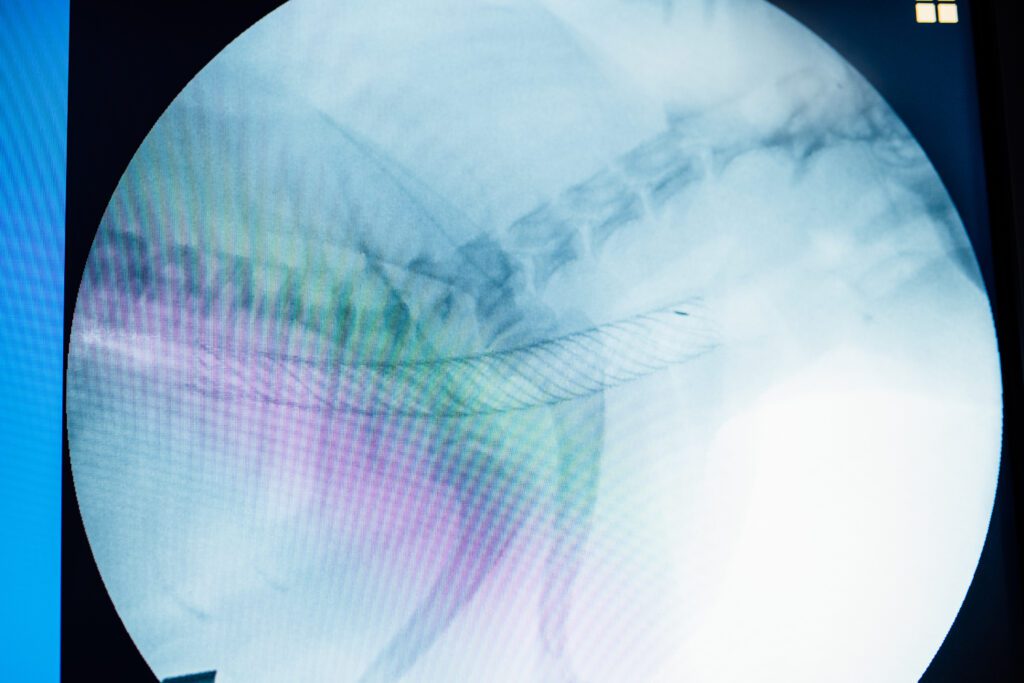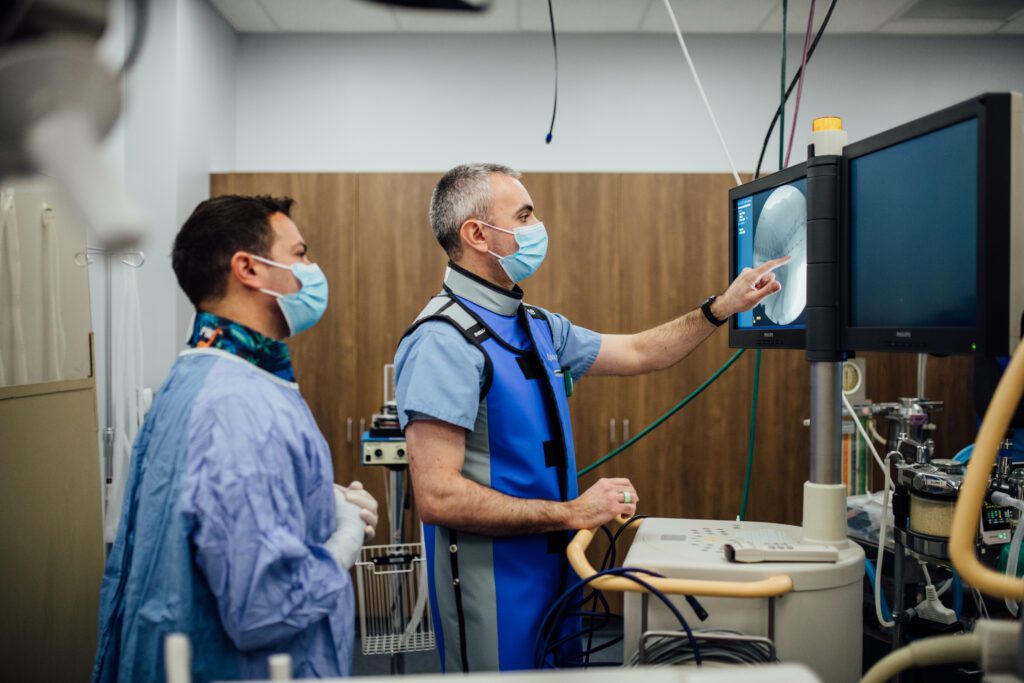Interventional Radiology Procedures
Stents
 Conventional surgeries can be replaced with less invasive procedures through the use of interventional radiology, reducing a pet’s recovery time. Advanced imaging such as fluoroscopy, CT, MRI, and ultrasounds are used to assist specialists in performing the procedure. Tracheal collapses, shunts, and some cardiac procedures are performed using interventional radiology. At VSC, members of our radiology, internal medicine, surgery, and cardiology team perform various interventional procedures using these techniques.
Conventional surgeries can be replaced with less invasive procedures through the use of interventional radiology, reducing a pet’s recovery time. Advanced imaging such as fluoroscopy, CT, MRI, and ultrasounds are used to assist specialists in performing the procedure. Tracheal collapses, shunts, and some cardiac procedures are performed using interventional radiology. At VSC, members of our radiology, internal medicine, surgery, and cardiology team perform various interventional procedures using these techniques.
Tracheal Stent Placement
VSC offers a non-surgical procedure as a treatment of tracheal collapse: tracheal stent/tracheoplasty. When medical management has been unsuccessful, surgical correction, such as a tracheal ring or placement of extraluminal devices, may be offered, but complications may develop.
Tracheal stenting, also called tracheoplasty, is a treatment option for tracheal collapse that is refractory to medical management. When the patient is referred to VSC for a tracheal stent, the magnitude of the tracheal collapse will be evaluated under fluoroscopy and then the appropriate stent will be deployed.

Urethral Stent Placement
Urethral stents are placed in patients with urethral obstruction (usually secondary to a tumor). A positive-contrast urethrogram is performed under anesthesia to highlight the abnormal portion of the urethra. The length and width of the abnormal portion of the urethra is measured under fluoroscopy. The appropriately sized stent is then placed over the length of the abnormal portion of the urethra under fluoroscopic guidance.
Intrahepatic Portosystemic Shunt Treatment
Correction of portosystemic shunts can be performed in patients when the shunting vessel is located within the liver. Under fluoroscopic guidance, a stent is placed in the caudal vena cava and embolization coils are placed in the shunting vessel adjacent to the stent. Over time the coils will cause the shunting vessel to close.
Chemoembolization of Liver Tumors
When a mass in the liver is not surgically resectable, the artery supplying the mass can be occluded with embolization coils under fluoroscopic guidance, which will cut off the tumors blood supply. It is also possible to administer chemotherapy drugs directly into the mass during this procedure.
Our cardiology department performs four interventional procedures – balloon valvuloplasty, cutting balloon valvuloplasty, patent ductus arteriosus, and transvenous pacemaker implantation.
